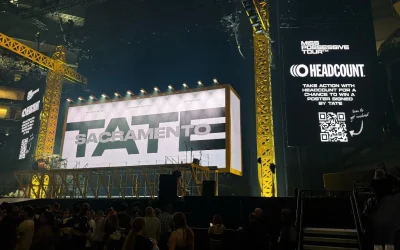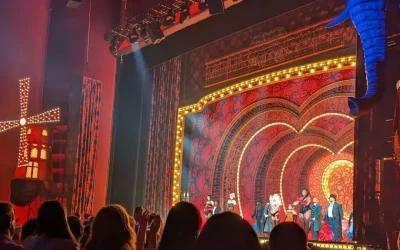Live Nation Canada cut the ribbon on the 50,000-capacity Rogers Stadium over the weekend, staging a sold-out June 29 performance by K-pop superstars Stray Kids that formally launched the country’s largest purpose-built music venue. But while the show marked what promoter Live Nation hailed as “a landmark moment for live music in Toronto,” many in attendance say the night ended in an hours-long slog to get out of the building and onto transit.
Rogers Stadium, a seasonal, open-air facility erected on the former Downsview Airport lands (now branded YZD), is designed to answer the current glut of stadium-size tours while filling a summer void in Canada’s biggest city. Live Nation says the venue will pump between CA $80 million and CA $100 million into the local economy, generate thousands of jobs, and underscore Toronto’s status as a “must-play” market.
The project is backed by the venue’s naming partner Rogers Communications, which invested CA $5.2 million in 5G+ infrastructure and rolled out perks such as an exclusive “Rogers Beyond the Seat” entry lane and post-show “Rogers Replay” highlight reels for customers.
Fourteen concerts are booked for the inaugural season, including four nights of Coldplay (July 7-12), a two-night stand by BLACKPINK (July 22-23), shows by Chris Brown (Aug. 19-20) and Oasis (Aug. 24-25), plus September dates featuring System Of A Down & Deftones, and Hozier.
Opening-night growing pains
Despite extra TTC subway trains and GO Transit service — offered free to ticket-holders under a sustainability initiative trumpeted in the venue launch — fans described what local councillor James Pasternak called a “surge of crowds” funnelled toward the Downsview Park transit hub after the encore. Social-media posts and interviews with concertgoers detailed:
- waits of 60–120 minutes to exit the grounds;
- gridlock at water-refill stations, with some patrons lining up “for over an hour”;
- reports of fainting in the crush;
- ride-share drivers repeatedly cancelling pickups because of limited vehicle access.
Autumn Halvorsen, who traveled seven hours from Michigan, said she spent an hour inching toward the gates, then another 20 minutes trekking to find an Uber. “It was just kind of a nightmare,” she told CBC News, adding she is unlikely to return for another show.
Live Nation promises changes
In a statement Monday, Live Nation Canada said it is “already making adjustments based on fan and community feedback and will continue to refine operations … working closely with city officials, the TTC and Metrolinx.” Pasternak is scheduled to meet Wednesday with Live Nation and landowner Northcrest Developments to review possible fixes, including additional egress routes, crowd-control staffing, water access and noise-mitigation measures for nearby residents.
Balancing scale and experience
With the DOJ’s antitrust case against parent Live Nation Entertainment still looming in the United States — and Canadian regulators facing their own questions about competition in ticketing — the debut of a Live Nation–run super-venue in Toronto was always bound to draw scrutiny. Last September, when TicketNews first reported the project, social-media reaction split between excitement over a fresh concert option and skepticism about pricing and market concentration.
For now, fans like Shannon Spencer, who plans to see Coldplay next week, are preparing their own work-arounds. “I’ll probably leave 20 minutes early,” she said, “even though I paid to see the whole show. It’s a trade-off between catching the finale and getting home safely.”
Whether Live Nation can iron out the kinks before the next 50,000-strong crowd arrives will go a long way toward determining if Rogers Stadium becomes the festival-like summer haven the company envisions — or another cautionary tale in the live-events logistics playbook.



